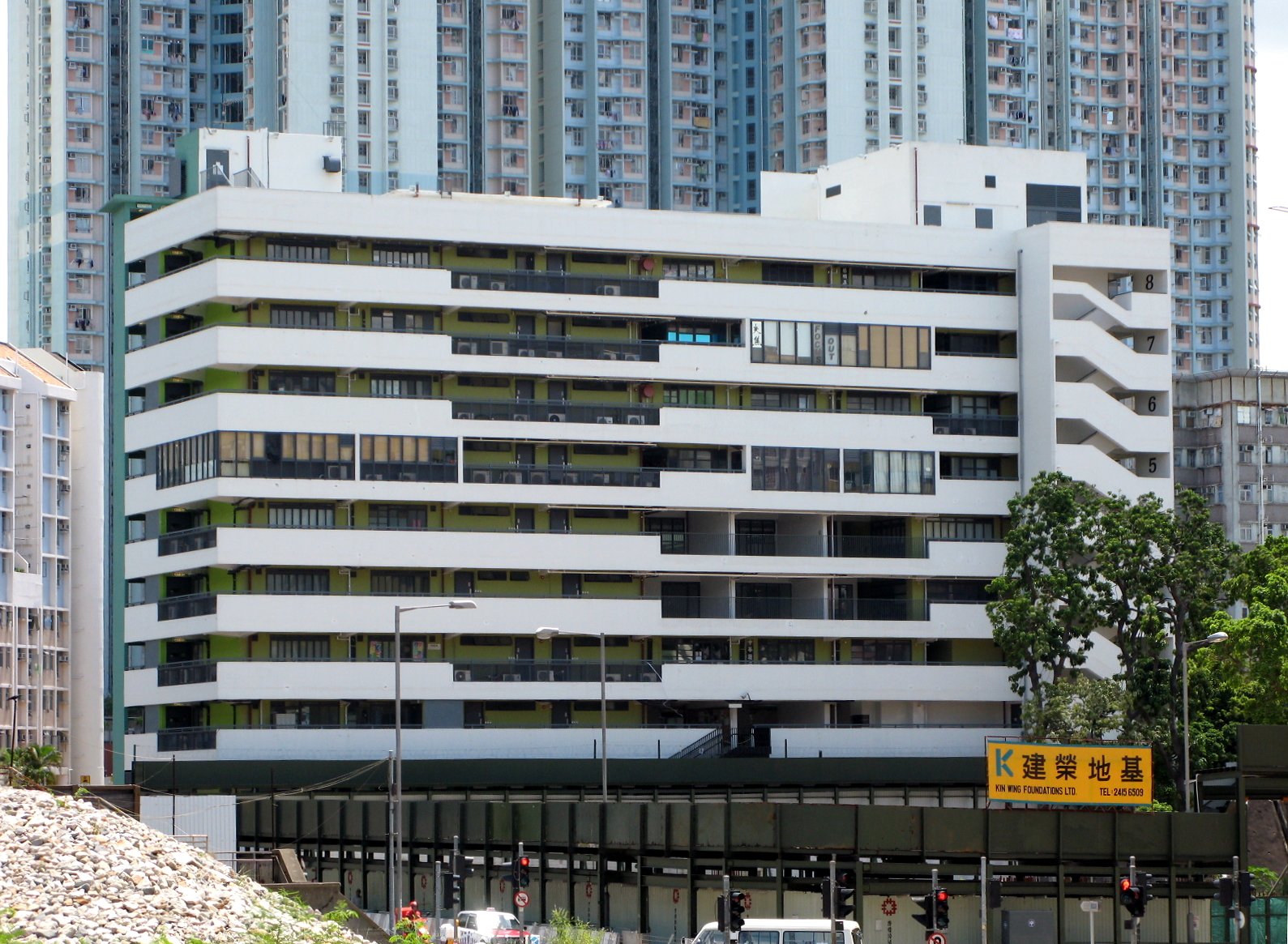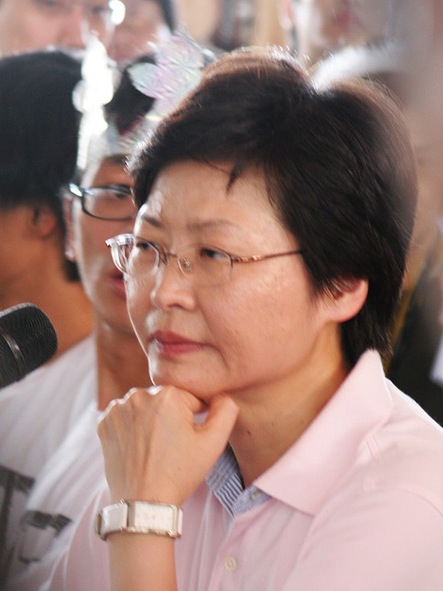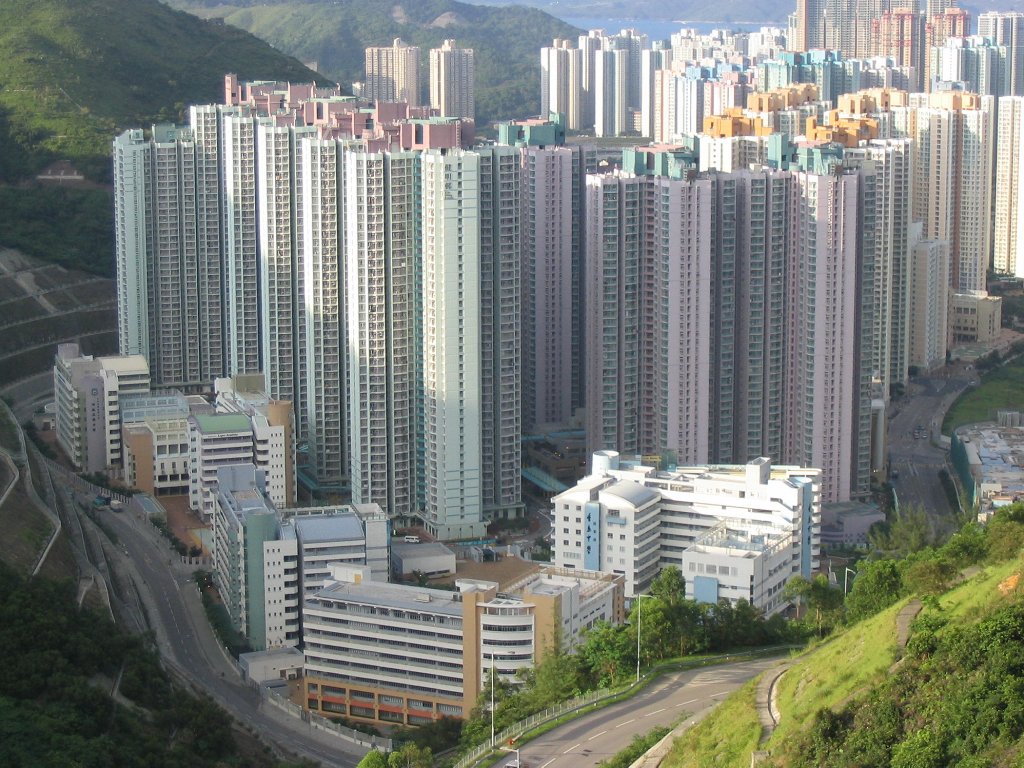|
Mei Ho House
Mei Ho House (), formerly part of Shek Kip Mei Estate, Hong Kong, is the last remaining example of a "Mark I" building in a single-block configuration. While the other buildings of the estate dating from the 1950s have been demolished, being replaced by new ones, Mei Ho House was chosen to be preserved. History After a devastating fire in December 1953 that left thousands homeless, the Colonial government built a 29-block resettlement estate on the site of the burnt-down shanties to house the homeless victims. Eight blocks (Blocks A to H), later renumbered as Blocks 10 through 13 and 35 through to 41, were constructed with the financial aid of the United Nations (Mei Ho House is Block H, later Block 41). These 7-storey blocks were constructed in the Bauhaus architectural style with an 'H' configuration consisting of 2 residential wings, with communal sanitary facilities linking them. During the Hong Kong 1956 riots, the building was used as one of the bases for the rioters. ... [...More Info...] [...Related Items...] OR: [Wikipedia] [Google] [Baidu] |
Shek Kip Mei Estate
Shek Kip Mei Estate is the first public housing estate in Hong Kong. It is located in Sham Shui Po and is under the management of the Hong Kong Housing Authority. The estate was constructed as a result of a fire in Shek Kip Mei in 1953, to settle the families of inhabitants in the squats over the hill who lost their homes in one night. Originally constructed in 1953 to alleviate the immediate housing needs, the units in this "Mark I" estate were utilitarian. Redevelopment of the estate commenced in 1972, with new towers coming on stream between 1979 and 1982. Site 1 of redevelopment was occupied in 2007. The estate now consists of 21 residential blocks, containing 10,800 rental flats. The estate has an authorised capacity of 26,400. History Following the Second World War, a large number of migrants from the mainland arrived in Hong Kong. Due to the lack of housing policy, and thus non-availability of affordable housing, the migrants lived illegally in wooden shanties in ... [...More Info...] [...Related Items...] OR: [Wikipedia] [Google] [Baidu] |
List Of Grade I Historic Buildings In Hong Kong
Grade I historic buildings in Hong Kong are those selected as those "outstanding merits of which every effort should be made to preserve if possible". These buildings may be protected under the Antiquities and Monuments Ordinance; after consulting the Antiquities Advisory Board, with the approval of the Chief Executive and the publication of the notice in government gazette, the Antiquities Authority may legally declare the Graded historic buildings to be protected as Declared Monuments. Five Grade I historic buildings have been demolished in the last two decades. ''Note:'' This list is accurate Antiquities and Monuments OfficeList of Graded Historic Buildings in Hong Kong (as at 6 November 2009) A territory-wide grade reassessment has been ongoing since. Sethis linkfor the latest grading update. Central and Western District Eastern District Islands District Kowloon City District Kwun Tong District North District Sai Kung District ... [...More Info...] [...Related Items...] OR: [Wikipedia] [Google] [Baidu] |
Grade II Historic Buildings In Hong Kong
Grade most commonly refers to: * Grade (education), a measurement of a student's performance * Grade, the number of the year a student has reached in a given educational stage * Grade (slope), the steepness of a slope Grade or grading may also refer to: Music * Grade (music), a formally assessed level of profiency in a musical instrument * Grade (band), punk rock band * Grades (producer), British electronic dance music producer and DJ Science and technology Biology and medicine * Grading (tumors), a measure of the aggressiveness of a tumor in medicine * The Grading of Recommendations Assessment, Development and Evaluation (GRADE) approach * Evolutionary grade, a paraphyletic group of organisms Geology * Graded bedding, a description of the variation in grain size through a bed in a sedimentary rock * Metamorphic grade, an indicatation of the degree of metamorphism of rocks * Ore grade, a measure that describes the concentration of a valuable natural material in the surrounding ... [...More Info...] [...Related Items...] OR: [Wikipedia] [Google] [Baidu] |
Shek Kip Mei
Shek Kip Mei, is an area in New Kowloon, to the northeast of the Kowloon Peninsula of Hong Kong. It borders Sham Shui Po and Kowloon Tong. History At the time of the 1911 census, the population of Shek Kip Mei was 72. A major fire on 25 December 1953 destroyed the Shek Kip Mei shanty town of immigrants from Mainland China who had fled to Hong Kong, leaving 53,000 people homeless. After the fire, the governor Alexander Grantham launched a public housing programme to introduce the idea of multi-storey building for the immigrant population living there. The standardised new structures offered fire- and flood-resistant construction to previously vulnerable hut dwellers. The programme involved demolishing the rest of the makeshift houses left untouched by the fire, and the construction of the Shek Kip Mei Low-cost Housing Estate in their stead. The apartments were small, only about . Each unit could house five people, and each building had a capacity of 2,500 residents.The ... [...More Info...] [...Related Items...] OR: [Wikipedia] [Google] [Baidu] |
Public Housing Estates In Hong Kong
This is a list of public housing estates in Hong Kong. Many of them are properties of Hong Kong Housing Authority (HKHA), while some of them are properties of Hong Kong Housing Society (HKHS). Central and Western District Sai Wan (Kennedy Town) Wan Chai District Tai Hang Eastern District Chai Wan and Siu Sai Wan Shau Kei Wan Quarry Bay and North Point Southern District Ap Lei Chau Aberdeen, Kellett Bay and Waterfall Bay Stanley Yau Tsim Mong District Yau Ma Tei Sham Shui Po District Cheung Sha Wan Sham Shui Po Shek Kip Mei Kowloon City District Hung Hom, To Kwa Wan, Ma Tau Wai Ho Man Tin Kai Tak development area Wong Tai Sin District Wong Tai Sin (Chuk Yuen) Diamond Hill Lok Fu (Lo Fu Ngam) and Wang Tau Hom Ngau Chi Wan Tsz Wan Shan Note: all the estates in Tsz Wan Shan, except Sha Tin Au Estate, have been rebuilt from former Tsz Wan Shan Estate, which was built in 1964 and demol ... [...More Info...] [...Related Items...] OR: [Wikipedia] [Google] [Baidu] |
Adaptive Reuse
Adaptive reuse refers to the process of reusing an existing building for a purpose other than which it was originally built or designed for. It is also known as recycling and conversion. Adaptive reuse is an effective strategy for optimizing the operational and commercial performance of built assets. Adaptive reuse of buildings can be an attractive alternative to new construction in terms of sustainability and a circular economy. It has prevented thousands of buildings' demolition and has allowed them to become critical components of urban regeneration. Not every old building can qualify for adaptive reuse. Architects, developers, builders and entrepreneurs who wish to become involved in rejuvenating and reconstructing a building must first make sure that the finished product will serve the need of the market, that it will be completely useful for its new purpose, and that it will be competitively priced. Definition Adaptive Reuse is defined as the aesthetic process that adapts bui ... [...More Info...] [...Related Items...] OR: [Wikipedia] [Google] [Baidu] |
North Kowloon Magistracy
The North Kowloon Magistracy (北九龍裁判法院 / 北九龍裁判司署 before 1 July 1997) is a historic building and former Magistrate's Court located at No. 292, Tai Po Road, Shek Kip Mei, Kowloon, Hong Kong. The building was erected in 1960 and served the community for over 44 years. The Magistracy used to handle cases in the Kowloon District, which covers Mong Kok, Sham Shui Po, Shek Kip Mei, Cheung Sha Wan and Ho Man Tin, and could be considered one of the busiest in Hong Kong. It was closed in 2005 due to cost saving policy of the government and consolidation of magistracies from nine to six.Anquities and Monuments Office, Leisure and Cultural Services Department: "Introduction to 1444 Historic Buildings", p.338 [...More Info...] [...Related Items...] OR: [Wikipedia] [Google] [Baidu] |
The Standard (Hong Kong)
''The Standard'' is an English-language free newspaper in Hong Kong with a daily circulation of 200,450 in 2012. It was formerly called the ''Hongkong Standard'' and changed to ''HKiMail'' during the Internet boom but partially reverted to ''The Standard'' in 2001. The ''South China Morning Post'' (SCMP) is its main local competitor. Format ''The Standard'' is printed in tabloid format rather than in broadsheet. It is published daily from Monday to Friday. Ownership ''The Standard'' was published by Hong Kong iMail Newspapers Limited as of 2001 (previously known as Hong Kong Standard Newspapers Limited) but currently The Standard Newspapers Publishing Limited. These enterprises are owned by Sing Tao News Corporation Limited, also the publisher of '' Sing Tao Daily'' and ''Headline Daily''; the firm also has other businesses including media publications, ''The Standard'' was previously owned by Sally Aw's Sing Tao Holdings Limited. Aw is the daughter of the founder Aw Boo ... [...More Info...] [...Related Items...] OR: [Wikipedia] [Google] [Baidu] |
Carrie Lam (politician)
Carrie Lam Cheng Yuet-ngor ( Cheng; ; born 13 May 1957) is a retired Hong Kong politician who served as the 4th Chief Executive of Hong Kong from 2017 to 2022. She served as Chief Secretary for Administration between 2012 and 2017 and Secretary for Development between 2007 and 2012, and Chairperson of the Committee for Safeguarding National Security from 2020 to 2022. After graduating from the University of Hong Kong, Lam joined the British Hong Kong civil service in 1980 and served in various government agencies. She became a key official in 2007 when she was appointed Secretary for Development. During her tenure, she earned the nickname "tough fighter" for her role in the controversial demolition of the Queen's Pier in 2008. Lam became Chief Secretary for Administration under the Leung Chun-ying administration in 2012. From 2013 to 2015 Lam headed the Task Force on Constitutional Development for the 2014 Hong Kong electoral reform and held talks with student and oppos ... [...More Info...] [...Related Items...] OR: [Wikipedia] [Google] [Baidu] |
Revitalising Historic Buildings Through Partnership Scheme
The Revitalising Historic Buildings through Partnership Scheme () is an initiative launched by the Hong Kong Government, part of a broader policy of heritage conservation in Hong Kong. In order to preserve and put historic buildings into good use and promote public participation in conserving historic buildings, the Hong Kong Government has chosen Government-owned buildings for adaptive reuse under the Scheme. , 8 properties have been opened in their new functions and 11 additional properties have been allotted for renovation. New uses include a museum, a marketplace, a 'creative arts psychological therapy centre', a facility to train guide dogs for the blind, and a leadership training centre with hostel. Scope Eligible applicants are non-profit-making organisations with charitable status under Section 88 of the Inland Revenue Ordinance (Cap 112) and joint ventures of two or more non-profit-making organisations. Participation requirements are broad, with equal weight promised to ... [...More Info...] [...Related Items...] OR: [Wikipedia] [Google] [Baidu] |
List Of Grade II Historic Buildings In Hong Kong
Grade II historic buildings are those of special merit in Hong Kong. Efforts are required to preserve the building selectively. Note: This list is accurate A territory-wide grade reassessment has been ongoing since. Sefor the latest grading update. Central and Western District Eastern District Islands District Kowloon City District Kwun Tong District North District Sai Kung District Sha Tin District Sham Shui Po District Southern District Tai Po District Tsuen Wan District Tuen Mun District Wan Chai District Wong Tai Sin District Yau Tsim Mong District Yuen Long District See also * List of buildings and structures in Hong Kong * Heritage conservation in Hong Kong * Declared monuments of Hong Kong * List of Grade I historic buildings in Hong Kong * List of Grade III hist ... [...More Info...] [...Related Items...] OR: [Wikipedia] [Google] [Baidu] |
Public Housing In Hong Kong
Public housing in Hong Kong is a set of mass housing programmes through which the Government of Hong Kong provides affordable housing for lower-income residents. It is a major component of housing in Hong Kong, with nearly half of the population now residing in some form of public housing. The public housing policy dates to 1954, after a fire in Shek Kip Mei destroyed thousands of shanty homes and prompted the government to begin constructing homes for the poor. Public housing is mainly built by the Hong Kong Housing Authority and the Hong Kong Housing Society. Rents and prices are significantly lower than those for private housing and are heavily subsidised by the government, with revenues partially recovered from sources such as rents and charges collected from car parks and shops within or near the residences. Many public housing estates are built in the new towns of the New Territories, but urban expansion has left some older estates deep in central urban areas. They are ... [...More Info...] [...Related Items...] OR: [Wikipedia] [Google] [Baidu] |

.jpg)




